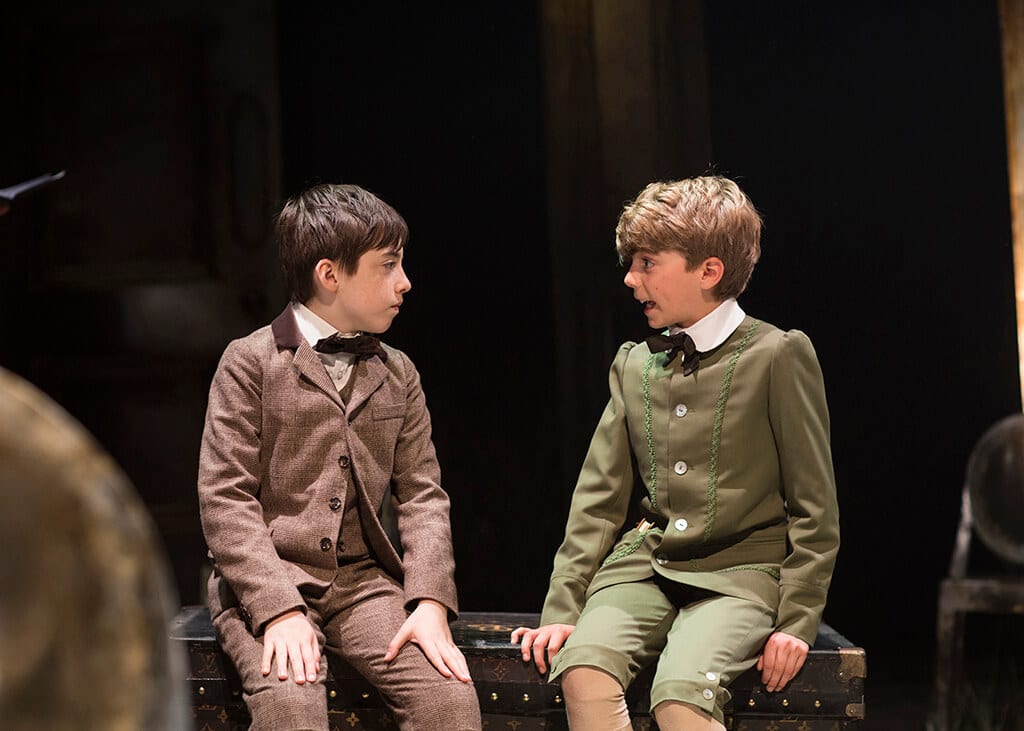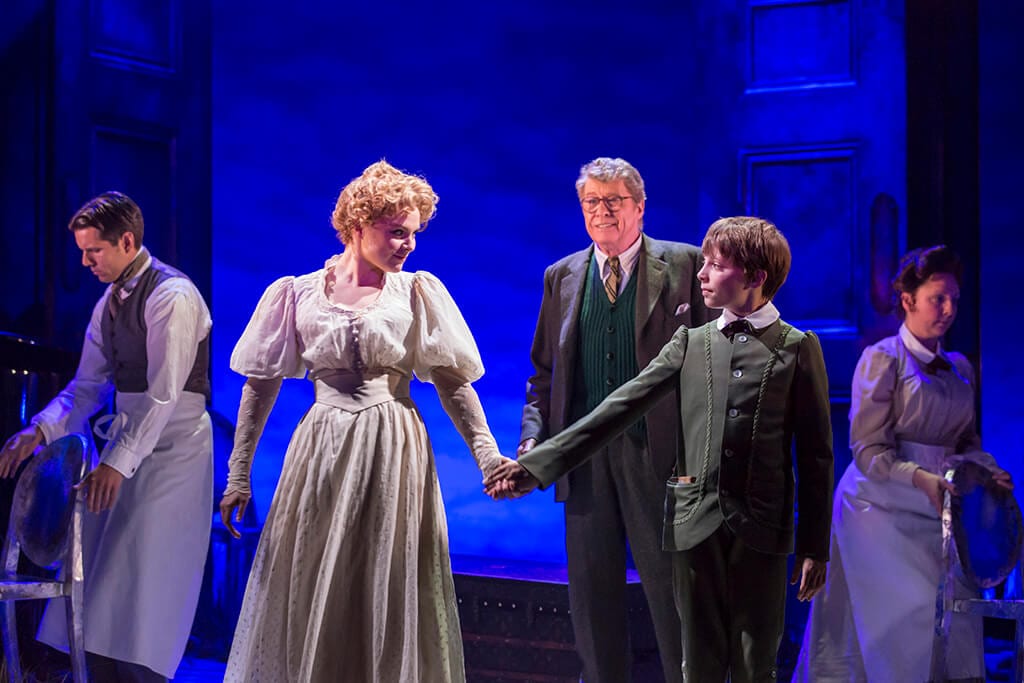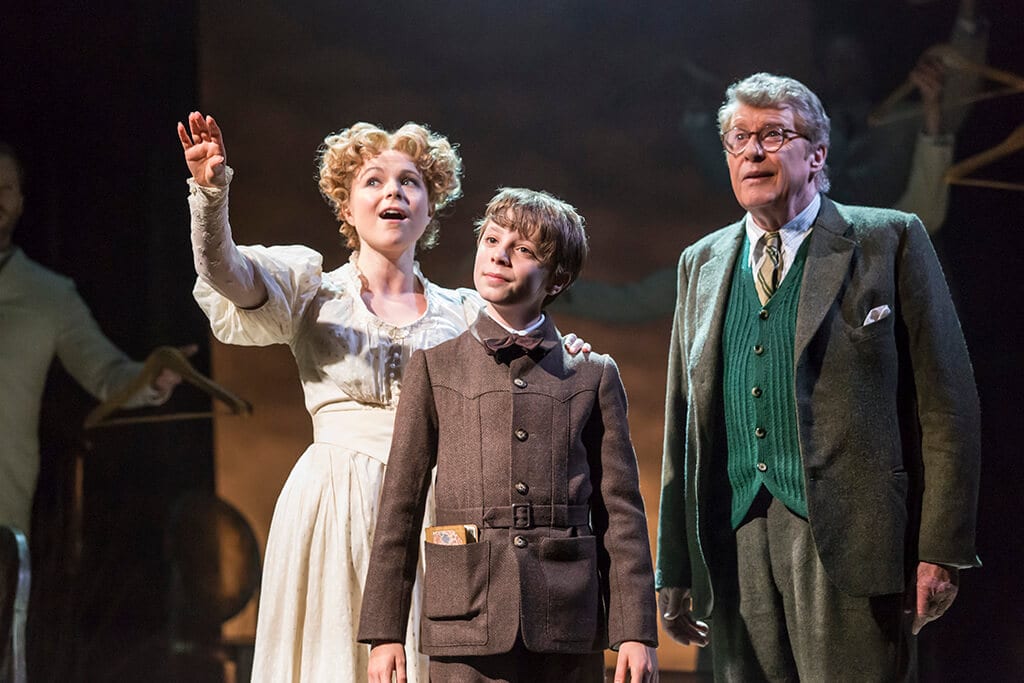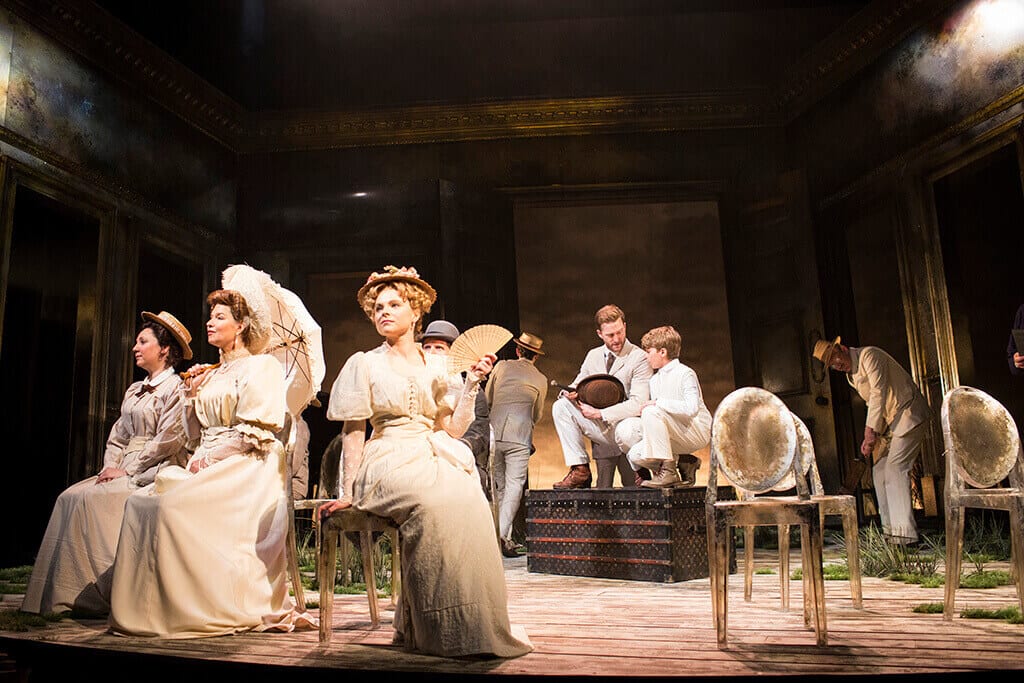There is really only one reason why Richard Taylor and David Wood’s 2011 theatrical version of the 1953 L.P. Hartley novel, The Go-Between, should be occupying a commercial theatre on Shaftesbusy Avenue, and it can be neatly summed up in two words: ‘Michael’ and ‘Crawford’.
Without the attachment, and indeed apparent championing, of this genuine theatrical giant (who for some unknown reason still doesn’t have a knighthood) I doubt it would have got within fifty miles of a London theatre.
You see the problem is, for all its charm, and an excellent cast, it’s just not a musical.
OK, it is on a stage, and people are singing, and there’s music, but structurally this is a play, and as a play shorn of the additional elements of music and singing it would probably make a perfectly acceptable – and I suspect faithful – adaptation of the source material.
However, musicals operate on a higher plane, and the work involved in turning the source material into a functioning piece of musical theatre is far greater than simply setting all the dialogue to music.
That work just hasn’t been done here.
Instead what we’re left with is an evening of often beautifully sung vocal arrangements seamlessly stitched together – the show is almost completely through-sung, with a few dialogue scenes – which pass before our eyes without ever being particularly engaging.
Rather like looking out of a train window as you travel through East Anglia: the view’s lovely but featureless and, after a while, just a bit…well…boring.
The story concerns a sixty-three year old man, Leo Colston (Michael Crawford, seventy-four but for some reason playing it like he’s eighty) who ‘for a reason never fully explained’– to quote the show that made him a worldwide star – goes off into the attic and starts rummaging through a trunk, coming upon his diary from fifty years previously when he was thirteen and spent three weeks at a country estate in Norfolk and acted as the titular messenger between two illicit lovers, Marian (Gemma Sutton), and the socially-unsuitable-but-attractive-when-wet-in-a-Mr-Darcy-way local farmer, Ted (Stuart Ward).
The story then skips back and forth between the older Leo, and his young self (alternating with young players but portrayed at this performance by the astonishingly good William Thompson who at thirteen is already a fine singing actor).
The younger Leo (who ‘for a reason never fully explained’ has a copy of the same diary in his pocket which is half the size of that the older Leo takes from his trunk) interacts with the family at ‘the big house’ on the estate as the older Leo either watches – Crawford is on stage in almost every scene – commenting on the action, interacts with his younger self or, rather confusingly, ‘for a reason never fully explained’, argues with him.
Anyway, what happens, happens. I won’t give away the plot. Let’s just say there are some inconsistencies of time and tense which don’t help with the narrative and when ‘the big event’ occurs (off stage!) you’ll forget about what’s happening on stage anyway and spend two minutes trying to figure out exactly what it was.
The whole is accompanied by Musical Director Nigel Lilley on an on-stage grand piano which I at first thought I’d grow to dislike, but actually works very well. The music is simultaneously ever-present and unobtrusive which focuses you back onto the characters although this only serves to point up the fact that without the dramaturgical work having been done to turn this play into a musical, you don’t really have any emotional capital invested in any of them. One observes without feeling engaged.
The set is static, and as my partner pointed out, is strikingly similar to that used in the 2008 Michael Legrand musical, Marguerite, which played for a few months and closed early at The Haymarket. That was a stinker. This isn’t a stinker, just a disappointment.




